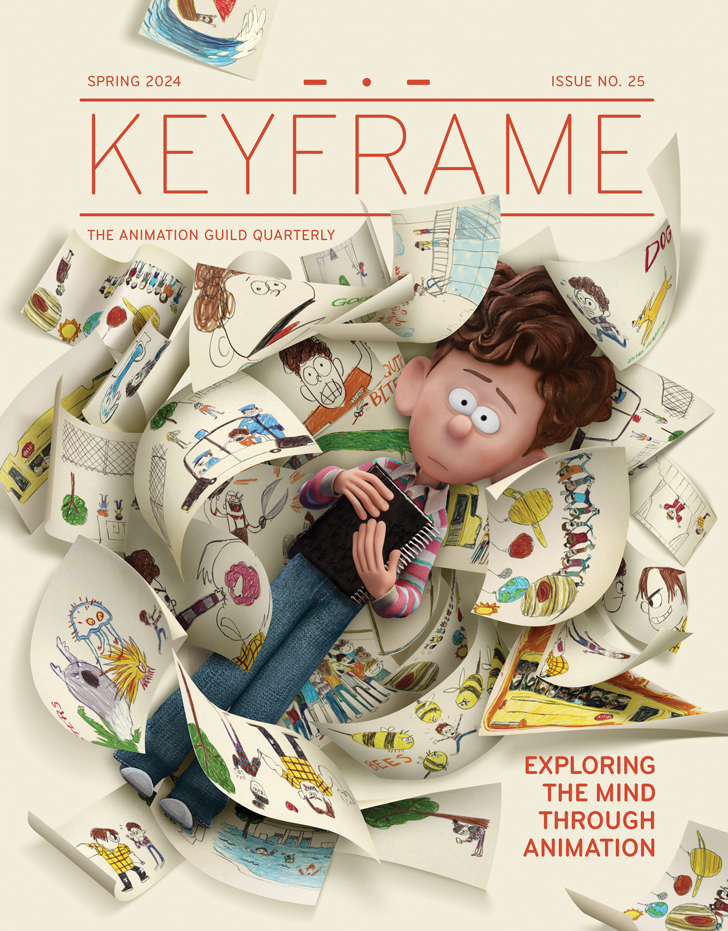
Animation’s power is that its artists transform the tangible out of the intangible. Animators use imagination, research, and their own hands to create fully developed worlds and creatures.
Archaeology’s strength is almost the opposite. Historians and scientists look at the tangible—pots, bones, dwellings—and use their imagination, research, and hands to document the intangible: memories of the worlds and creatures that came before us.
Kristin Donner has found a way to do both.
When not working on animated programs like The Fairly OddParents, The Fungies!, and Harley Quinn, the Color Supervisor, Color Designer, and Background Painter has been collaborating with Laura Harrison, an archaeologist and Director of Access 3D Lab at the University of South Florida, on their Project CLAY: Creative Learning Through Archaeology.
The duo met in 2014 at an archaeology dig in Turkey. Donner, who says she has always had an interest in what she describes as “material culture” and how we use items throughout time, had started working within the archeology communities during hiatuses for a change of scenery from her desk job—and also to get some sun. She and Harrison came up with the idea of Project CLAY and shaped it into a way to teach kids about the Early Bronze Age through hands-on activities that integrate art and digital technologies.
In addition to working with 3D printing made at Harrison’s lab that shows kids replicas of pottery from that time, Project CLAY includes a comic called Mix, Mold, Fire! It stars Abby the Apprentice, a young potter designed by Donner. Abby has a rush order on a special jug. As she races to complete her task, readers learn how pottery was made circa 2200-2150 B.C.E.
“Both mediums provide an opportunity to understand human stories or human experience,” Donner says of animation and archaeology.
The dig in Turkey was a lucky opportunity for Donner because the pottery studios and workstations were fairly intact. She saw the pottery tools being excavated, and she says: “I made this connection like oh, this is the pottery production line. And I’m working in an animation production pipeline.”
“There’s historical evidence of the process of crafting being in a community environment or a team endeavor,” she adds.
Donner’s research into how to portray those who lived in the Early Bronze Age included everything from what people wore to the gender roles of this community. These also parallel her work in animation.
“I’m really interested in character costuming,” she says. “A really fun part, in terms of developing the characters for the comic, was that I did a lot of research on fabrics that were used in the Bronze Age—what clothing styles maybe would have been typical and what types of dye would have been used to color them. I tried to be thoughtful on the historic feasibility of how the characters were portrayed.”
She notes that the site director in Turkey interpreted the site as being gender inclusive due to some of the human remains found. It’s also thought that some of the communal workspaces probably included family workspaces.
“This helped us feel like our choice of having a young protagonist could work [because it was] grounded in the scientific findings on the site,” Donner says. “But it was also really important to us that it be a strong female voice as the main character, in terms of gender representation and inclusivity.”
Donner’s experiences with archaeology have infiltrated her own creative process in animation. She’s currently developing an unannounced animation project at Nickelodeon Animation Studios and says that as she and her partner, Kyle Neswald, created “our world as it exists in the moment of the story, we started thinking about, ‘How did it get this way? How did this world evolve?’ We dug deeper and deeper and deeper and, before we knew it, we’d written a history.”

Project CLAY has become a success, partnering with Harrison’s lab in Tampa to create Activity Boxes for Florida classrooms. The educational tool meets the requirements of Florida’s state teaching curriculum for sixth graders. Harrison and Donner also co-authored a chapter of the 2022 academic research book, Comics and Archaeology.
Donner, who teaches in the Experimental Animation program at Laguna College of Art and Design, considers Project CLAY to be her “side hustle” and “a passion project.” But she admits that it has shifted her focus a little bit when it comes to what kind of animation projects she chooses to explore.
While she was already thinking about educational components and responsible storytelling before she met Harrison, she says: “Any time I explore another culture, whether it’s just traveling and meeting people from another culture, or in this case, looking back in time at the evolution of a culture and how that culture is expressed through its artifacts, it makes me really consider the experience of the ‘other’ and try to reach outside myself and understand someone else’s life experience.”
Learn more about Project CLAY here.












.png)